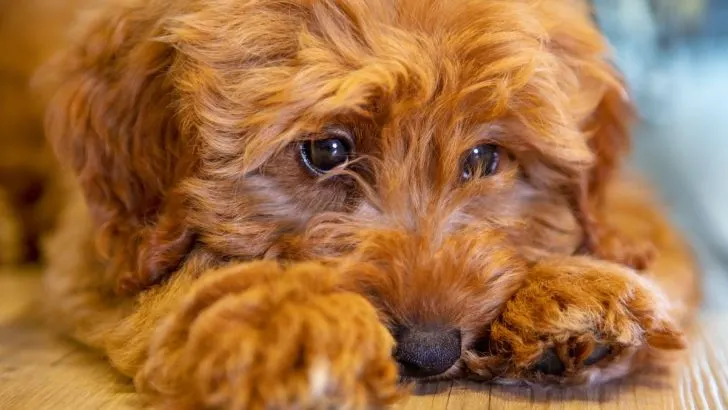Gastric Dilatation Volvulus in dogs is a life-threatening condition that all owners of dogs should be aware of.
Commonly referred to as bloat, this severe medical emergency involves the rapid expansion and twisting of the stomach, leading to devastating consequences if not promptly treated.
GDV is especially prevalent among large breeds, with statistics showing that approximately 39% of Great Danes will experience this condition at some point in their lives.
Therefore, understanding GDV is very important, especially for those with breeds at higher risk.
So, let’s say more about this critical condition and how to manage it effectively.
What Is Gastric Dilatation Volvulus In Dogs?
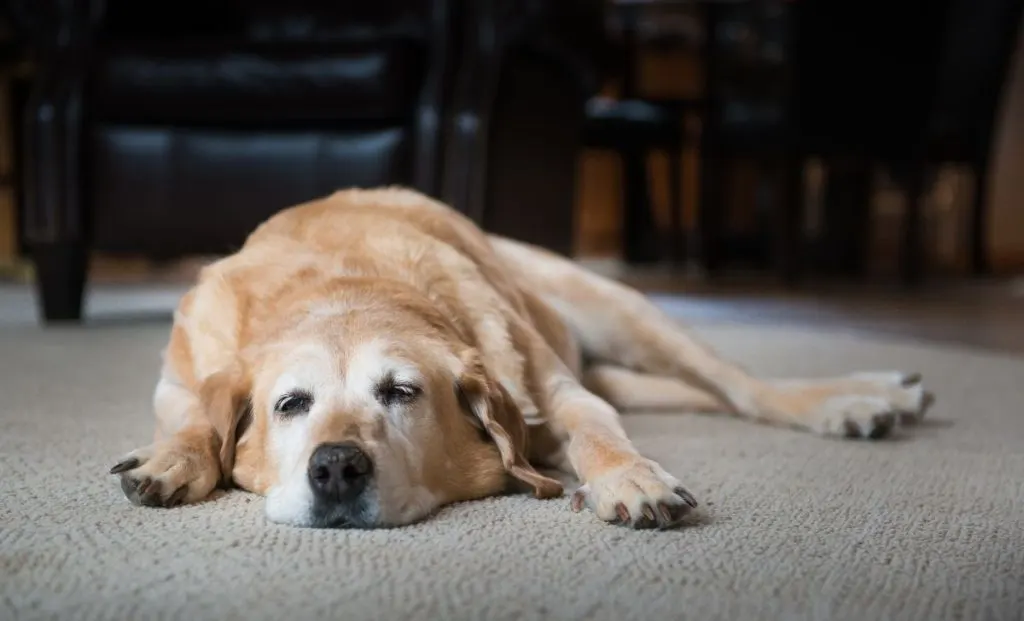
Gastric Dilatation Volvulus in dogs, often simply called GDV, is a complex condition characterized by the rapid expanding (dilatation) and twisting of the stomach (volvulus).
This twist obstructs blood flow, preventing blood from returning to the heart and causing severe abdominal pain.
The distended stomach presses against the abdominal wall, leading to decreased cardiac output and low blood pressure.
This pressure also compromises blood supply to vital organs, potentially causing tissue damage and necrosis.
Cardiac arrhythmias and intravascular coagulation are common complications due to the disruption in blood flow.
Why is GDV A Critical Condition For Dogs?
Gastric Dilatation Volvulus in dogs is different from a simple bloat. It is a critical condition due to its rapid progression, high mortality rate, and severe systemic effects.
This condition obstructs blood flow, causing severe cardiovascular, respiratory, gastrointestinal, coagulation, and renal dysfunction.
These disruptions can lead to shock, cardiac arrhythmias, respiratory distress, gastric necrosis, and disseminated intravascular coagulation, making GDV a true veterinary emergency (1).
Moreover, the mortality rate of GDV is alarmingly high. Studies indicate a mortality rate of 15% among dogs with confirmed GDV.
In more severe cases and with treatment delays, mortality rates can reach as high as 60% (2).
So, with these statistics, we can clearly see the critical nature of GDV and the necessity for prompt recognition and treatment.
Understanding GDV And How It Occurs In Dogs
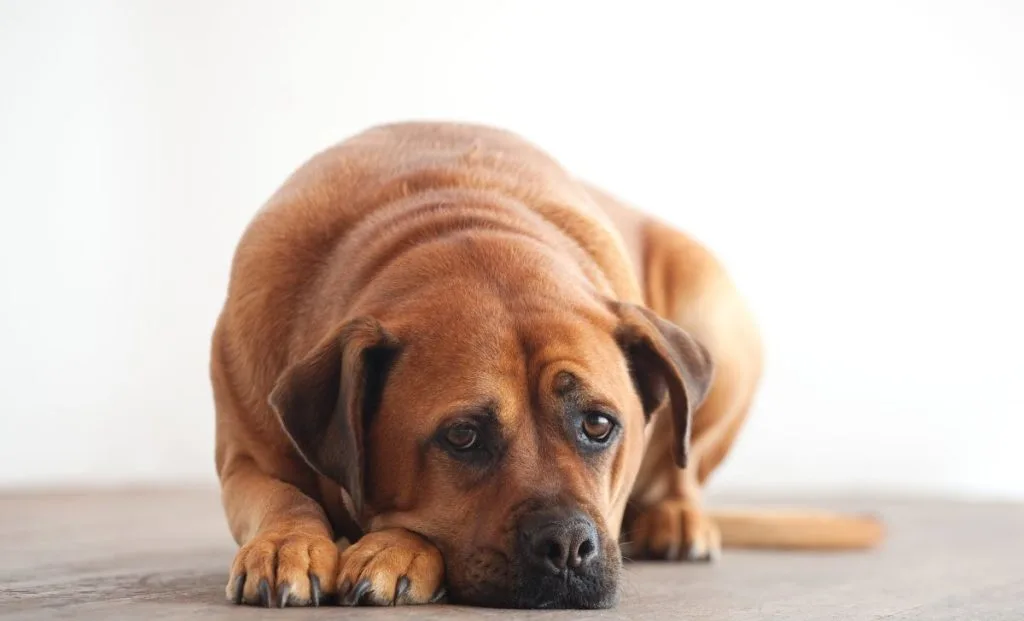
The primary mechanisms of GDV involve the stomach filling with gas, food, or fluid, leading to a distended stomach. This distention can cause the stomach to rotate or twist, cutting off blood flow to the stomach and other vital organs.
So, one important factor contributing to GDV is the ingestion of large meals, which can increase the risk of bloat. The condition is exacerbated when the stomach twists, trapping gas and contents, and obstructing blood flow.
This twisting not only affects the stomach but also drags along the spleen, potentially causing severe damage.
Another thing that is to blame for the development of GDV is vigorous exercise before or after eating.
More often than not, dogs that engage in extensive activities around meal times experience increased stomach movement, which can sometimes lead to twisting.
Simple Bloat Vs Gastric Dilatation Volvulus In Dogs
Simple bloat occurs when a dog’s stomach fills with gas, food, or fluid, causing it to swell. This can make your dog feel uncomfortable and you might notice their abdomen looking larger than usual.
Simple stomach bloat is also known as gastric dilatation, but what makes it different from GDV is that it does not involve the twisting of the stomach.
Usually, with simple bloat, the dog might need to pass gas or vomit to relieve the pressure. Sometimes, a veterinarian might need to help by decompressing the stomach with a tube.
Gastric Dilatation Volvulus, is much more serious. As we mentioned previously, here, not only does the stomach fill with gas, food, or fluid, but it also twists.
Therefore, GDV requires urgent veterinary care.
Which Dogs Are More Susceptible To GDV?
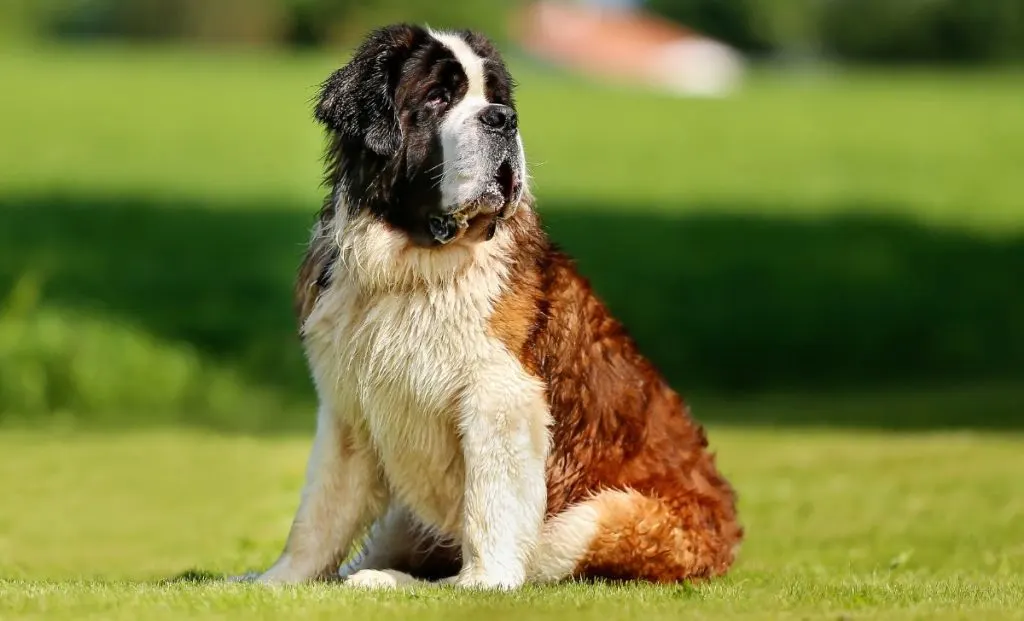
Dogs with certain physical characteristics and genetic predispositions are more susceptible to Gastric Dilatation Volvulus (GDV).
Anxious dogs that are in stressful environments may show behaviors such as rapid eating, which are important contributing factors that can increase the risk of GDV. Conversely, less anxious dogs are at lower risk of developing this condition (3).
Also, dogs that are fed only dry food are at greater risk of bloat as such food can expand in the stomach.
Large and giant breeds with deep, narrow chests relative to their width are particularly at risk.
Breeds such as Great Danes, German Shepherds , Irish Setters, Weimaraners, Saint Bernards, and Gordon Setters are among those most commonly affected.
The anatomical structure of these breeds predisposes them to GDV due to the increased thoracic depth-to-width ratio, which allows the stomach to move more freely and potentially twist (4).
What’s also interesting is that older dogs and those weighing more than 100 pounds are more susceptible to GDV.
In fact, an epidemiological study of 1,934 dogs with GDV found that both increasing age and weight were strongly associated with a higher risk of GDV (5).
You see, as dogs age, their stomach muscles may weaken, increasing the likelihood of gastric distension and volvulus. Increasing age and body weight significantly raise the risk of GDV in dogs.
Genetics also play a huge role in the susceptibility to GDV.
Dogs with a familial history of the condition, particularly those with a first-degree relative that has had GDV, are at higher risk.
Recent studies have identified specific alleles in immune system genes that are linked to an increased risk of developing GDV (6).
How Fast Does GDV Progress?
GDV can progress really quickly in dogs.
Within just an hour, a dog can go from having mild symptoms like restlessness and a bloated belly to severe, life-threatening problems.
During this time, the stomach fills up with gas or food, and then twists, which cuts off blood flow to important organs. Of course, this causes some serious pain for the dog.
It’s super important to recognize your pet’s condition and get them to the veterinarian right away because waiting more than 5-6 hours can make it much more dangerous.
Let’s see how you can recognize the early signs of Gastric Dilatation Volvulus in dogs.
What Are Symptoms Of GDV In Dogs?
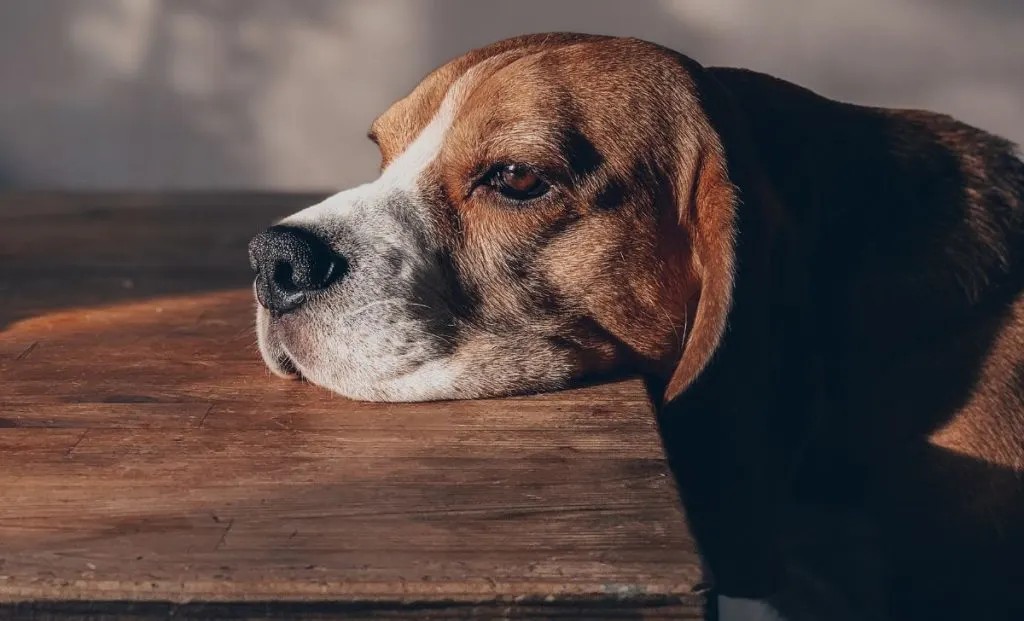
Let’s start by providing a quick list of GDV symptoms and then explain how and why each of these occur:
- Restlessness and pacing
- Abdominal distension (swollen or bloated abdomen)
- Unproductive retching (trying to vomit with no result)
- Rapid breathing
- Drooling
- Pale gums (white or grayish instead of pink)
- Weakness and collapse
- Pain and discomfort (e.g., whining or guarding the abdomen)
- Rapid heart rate
- Difficulty breathing
So, one of the first signs of GDV is restlessness and pacing. Your dog may appear uncomfortable and unable to settle down because of abdominal pain.
A visibly swollen or distended stomach is another key indicator; the stomach fills with gas, food, or fluid, causing it to expand significantly. This is often referred to as abdominal distension.
Now, you may be asking, “Can a dog with a twisted stomach still poop?” The short answer is, it is unlikely.
When a dog’s stomach twists, it traps gas and contents inside, blocking the passage of food and waste.
Therefore, a dog with GDV typically will not be able to defecate.
Another critical symptom to watch for is unproductive retching. Your dog may try to vomit but produce little or nothing, which is a significant red flag.
Rapid breathing is also common as the bloated stomach puts pressure on the diaphragm, making it difficult for your dog to breathe properly. Also, excessive drooling can occur as your dog struggles with nausea and discomfort.
Pale gums indicate reduced blood flow due to the twisted stomach, making the gums appear white or grayish instead of their usual pink color.
As GDV progresses, your dog might become weak and lethargic, and in severe cases, they could collapse due to shock and lack of blood circulation.
The condition also increases the risk of cardiac arrhythmias due to the stress on the heart and reduced cardiac output.
Diagnosis Of GDV In Dogs
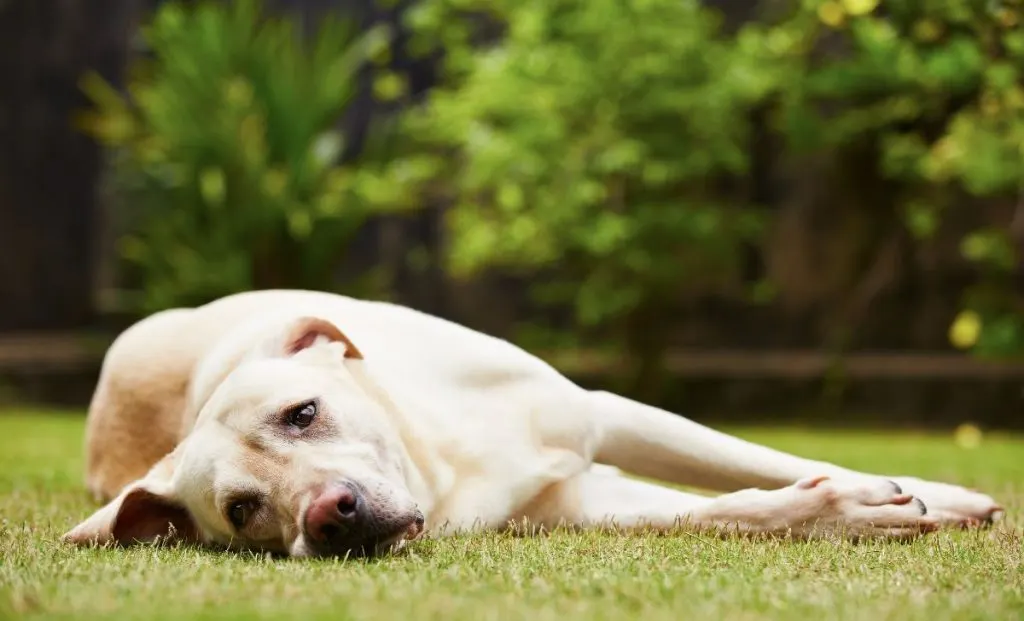
By now you are most likely aware that diagnosing Gastric Dilatation Volvulus in dogs is very important for timely and effective treatment.
If you notice any signs of GDV in your dog, the first person to call is your veterinarian.
Diagnostic Tests
Your vet will then start with the initial diagnosis. This means they will first start with a physical examination of your dog. Then they will proceed to do some diagnostic tests to confirm the condition, as well as assess the severity of it.
So, here are some tests that you can expect a veterinarian to do.
Physical Examination
When a dog is brought in with symptoms indicative of GDV, such as abdominal distension, restlessness, and unproductive retching, the veterinarian will start with a thorough physical examination.
The vet will palpate the abdomen to check for a distended stomach and signs of abdominal pain.
They will also look for other symptoms like rapid breathing, pale gums, and signs of shock, such as low blood pressure and a weak pulse.
Abdominal Radiographs (X-rays)
To confirm the diagnosis, the veterinarian will typically order X-rays. Radiographs are essential in visualizing the distended stomach and determining if a twist is present.
A classic sign of GDV on an X-ray is the “double bubble” or “Popeye arm,” which indicates the presence of a twisted stomach.
This technique helps differentiate between simple bloat and GDV, which is crucial for determining the appropriate treatment.
Blood Tests
Blood tests are conducted to evaluate the affected dog’s overall health and detect any complications. These tests often include a complete blood count and serum biochemistry.
Elevated lactate levels, for example, suggest poor blood flow and oxygen delivery, which are crucial for assessing the severity of GDV (7).
Blood tests also help identify issues such as intravascular coagulation and other blood-related problems that may need immediate attention.
Electrocardiogram (ECG)
Since dogs with GDV are at risk of developing cardiac arrhythmias due to reduced cardiac output, an ECG is performed to monitor the heart’s activity (8).
This test helps in detecting any irregular heart rhythms that could complicate the condition further.
Monitoring the heart is essential because GDV can put significant stress on the cardiovascular system.
Ultrasound
In some cases, an ultrasound may be used to get a better look at the stomach and surrounding structures.
This imaging technique can help assess the level of tissue damage and the occurrence of additional problems, such as damage to the spleen or other vital organs.
How Do You Treat Gastric Dilatation And Volvulus In Dogs?
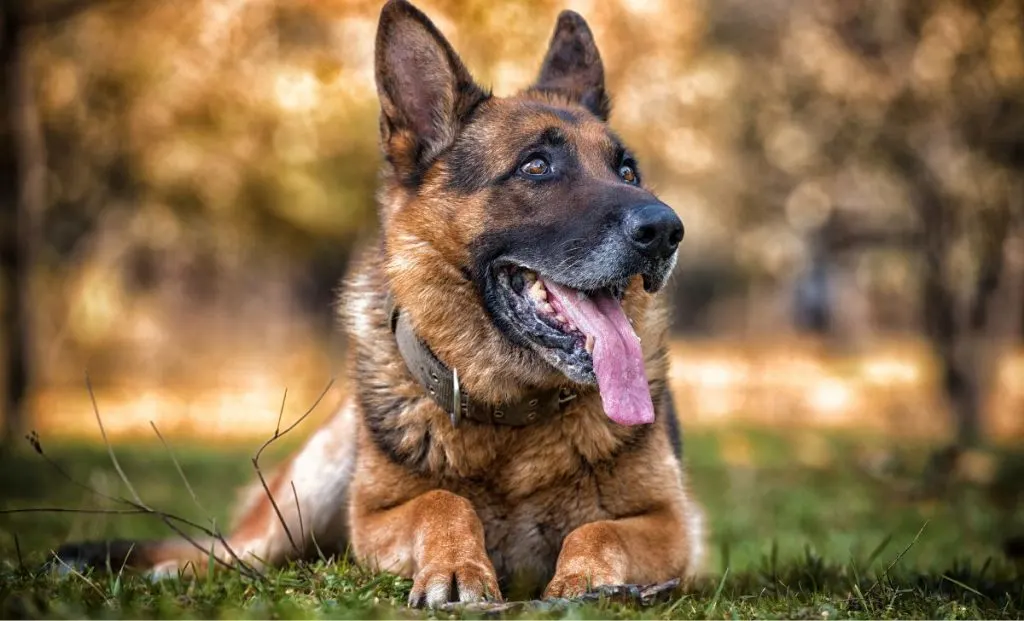
Once it comes to it, treating Gastric Dilatation Volvulus in dogs includes several different techniques.
And I have to tell you that treatment most often than not includes surgical interventions.
Emergency Care
The first priority in treating GDV is stabilizing the dog. Immediate shock treatment involves administering intravenous fluids to combat shock and maintain blood pressure.
This step is very important as it helps restore blood flow and ensures that vital organs receive adequate oxygen and nutrients.
Pain relief is also provided to alleviate the dog’s severe discomfort and reduce stress.
Additionally, decompression of the stomach is performed to relieve the pressure.
This is usually done using a tube passed through the dog’s mouth into the stomach or, in some cases, a needle inserted through the abdominal wall.
Non-Surgical Options
There are non-surgical options that are useful in some cases.
Decompression, as mentioned earlier, can temporarily relieve symptoms by allowing gas to escape from the distended stomach.
This can sometimes stabilize the dog enough to delay surgery if immediate surgical intervention is not possible.
So, you may be wondering ‘’What medication is used for bloat in dogs?
The use of NSAIDs is a go-to way to manage pain and inflammation caused by GDV.
However, I must point out that these non-surgical options are generally temporary measures and do not address the underlying issue of the stomach twisting.
Surgical Intervention
Most cases of GDV require urgent surgery to correct the twisted stomach and secure it to the abdominal wall.
This procedure, known as incisional gastropexy, involves attaching the stomach to prevent future twists.
During the surgery, the veterinarian will untwist the stomach, evaluate the tissue damage, and remove any necrotic tissue.
The stomach is then sutured to the body wall to prevent recurrence.
This surgical intervention is done under general anesthesia and is critical to restoring normal blood flow and ensuring the dog’s long-term health.
Can A Dog Survive GDV Without Surgery?
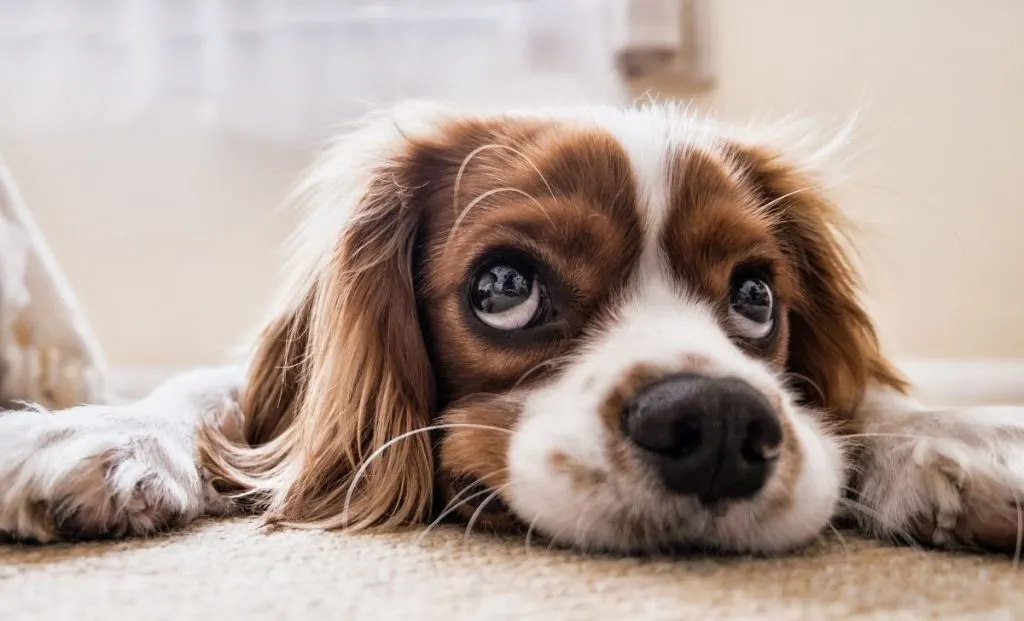
No, a dog cannot survive GDV without surgery. GDV is a life-threatening emergency that requires immediate medical and surgical intervention.
Without urgent surgery to correct the twist and restore normal function, the dog will not survive.
In most cases, the only humane alternative to surgery is euthanasia to relieve the dog’s suffering
How Successful Is GDV Surgery In Dogs?
Surgery for GDV is usually successful if done quickly. When treated promptly, 80% of dogs undergoing GDV surgery survive.
On the other hand, if therapy is postponed or if problems develop (like stomach tissue necrosis) the success rate drops dramatically.
About 50% of dogs whose stomachs are removed owing to tissue death have a decreased chance of survival.
What Are The Most Common Complications Of GDV Surgery In Dogs?
Common complications of GDV surgery include cardiac arrhythmias, which can occur due to the stress on the heart from the twisted stomach and reduced blood flow.
Other potential complications are infections, blood clotting issues, and peritonitis (an infection in the abdominal cavity).
For example, DIC is a serious disorder in dogs where blood clots form throughout the body’s small blood vessels, leading to severe bleeding.
It is a life-threatening complication that requires immediate and aggressive treatment, including blood transfusion such as the use of fresh frozen plasma to manage clotting issues.
The most dangerous side effects of GDV are linked to ischemia-reperfusion injury (IRI), which can lead to multiple organ dysfunction syndrome and systemic inflammatory response syndrome (9).
Therefore, post-surgery monitoring and intensive care is crucial to address these complications on time.
Is GDV Surgery Worth It?
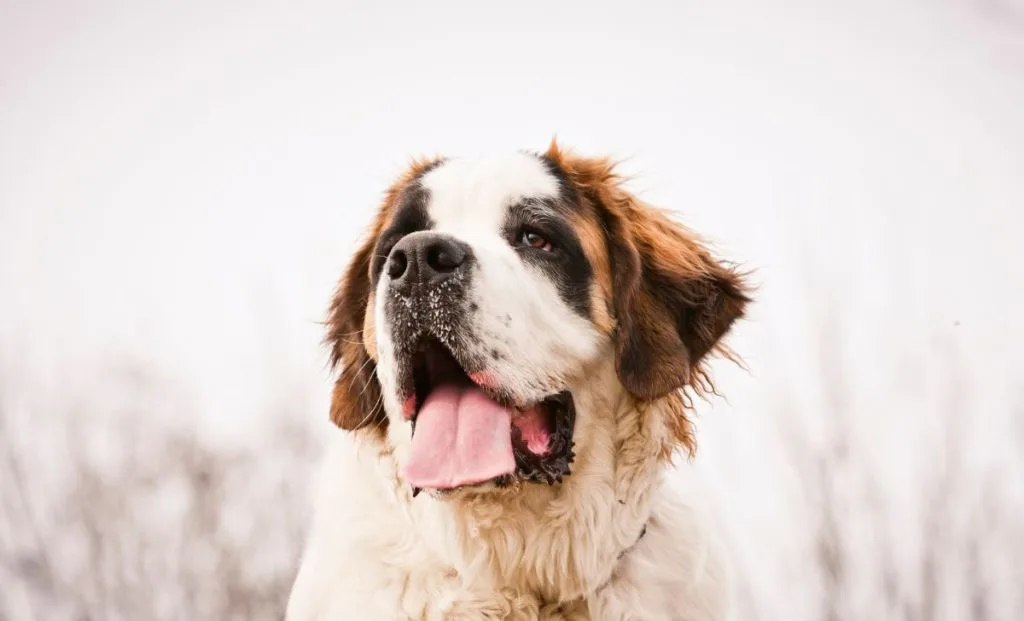
Yes, GDV surgery is worth it for many dogs, especially if they receive prompt treatment.
While the surgery is risky, the possibility of saving the dog’s life makes it a required and beneficial procedure.
How Much Does GDV Surgery Cost For Dogs?
The cost of GDV surgery can vary widely depending on the location and the severity of the condition. On average, the cost ranges from $1,500 to $7,500.
This cost includes pre-operative stabilization, the surgery itself, and post-operative care.
Complications and the possible need for additional treatments can increase the overall cost. I would recommend that you consider getting pet insurance, which can cover urgent surgery procedures and treatments.
Remember, preventing Gastric Dilatation Volvulus in dogs is the best approach to protect them from this life-threatening condition.
Therefore, focusing on dietary management and feeding practices can significantly reduce the risk.
The peace of mind that comes from knowing you’re ready to handle critical situations is invaluable.
So, make sure to take these steps and help your beloved dog receive the life-saving care they need, no matter the cost.
Good luck with your furry friend, and don’t hesitate to ask us if you have any questions!
References
1. Sharp, C., & Rozanski, E. (2014). Cardiovascular and systemic effects of gastric dilatation and volvulus in dogs.. Topics in companion animal medicine, 29 3, 67-70 . https://doi.org/10.1053/j.tcam.2014.09.007.
2. Brockman, D., Washabau, R., & Drobatz, K. (1995). Canine gastric dilatation/volvulus syndrome in a veterinary critical care unit: 295 cases (1986-1992).. Journal of the American Veterinary Medical Association, 207 4, 460-4 . https://doi.org/10.2460/javma.1995.207.04.0460.
3. Pipan, M., Brown, D., Battaglia, C., & Otto, C. (2012). An Internet-based survey of risk factors for surgical gastric dilatation-volvulus in dogs.. Journal of the American Veterinary Medical Association, 240 12, 1456-62 . https://doi.org/10.2460/javma.240.12.1456.
4. Glickman, L., Glickman, N., Cm, P., Schellenberg, D., & Lantz, G. (1994). Analysis of risk factors for gastric dilatation and dilatation-volvulus in dogs.. Journal of the American Veterinary Medical Association, 204 9, 1465-71 . https://doi.org/10.2460/javma.1994.204.09.1465.
5. Glickman, L., Glickman, N., Schellenberg, D., Raghavan, M., & Lee, T. (2000). Incidence of and breed-related risk factors for gastric dilatation-volvulus in dogs.. Journal of the American Veterinary Medical Association, 216 1, 40-5 . https://doi.org/10.2460/JAVMA.2000.216.40.
6. Hullar, M., Lampe, J., Torok-Storb, B., & Harkey, M. (2018). The canine gut microbiome is associated with higher risk of gastric dilatation-volvulus and high risk genetic variants of the immune system. PLoS ONE, 13. https://doi.org/10.1371/journal.pone.0197686.
7. Oron, L., Klainbart, S., Bruchim, Y., McMurray, J., Boysen, S., Saar, M., & Kelmer, E. (2018). Comparison of saphenous and cephalic blood lactate concentrations in dogs with gastric dilatation and volvulus: 45 cases.. Canadian journal of veterinary research = Revue canadienne de recherche veterinaire, 82 4, 271-277 .
8. Miller, T., Schwartz, D., Nakayama, T., & Hamlin, R. (2000). Effects of acute gastric distention and recovery on tendency for ventricular arrhythmia in dogs.. Journal of veterinary internal medicine, 14 4, 436-44 . 2.3.CO;2″ target=”_blank”>https://doi.org/10.1892/0891-6640(2000)014<0436:EOAGDA>2.3.CO;2.
9. Bruchim, Y., & Kelmer, E. (2014). Postoperative management of dogs with gastric dilatation and volvulus.. Topics in companion animal medicine, 29 3, 81-5 . https://doi.org/10.1053/j.tcam.2014.09.003.

Meet Iram, a devoted veterinarian, passionate dog lover, and current Ph.D. candidate at Utrecht University in the Netherlands. Seamlessly blending her roles as a vet and content writer, Iram channels her love for dogs into heartfelt narratives.
Since childhood, Iram nurtured a dream of becoming a vet, a passion that runs deep in her family. Having now fulfilled that dream, she’s eager to share her acquired knowledge. In her writing, Iram not only explores the emotional bond between humans and their canine friends but also integrates her veterinary expertise, offering readers a holistic understanding of their beloved pets.
